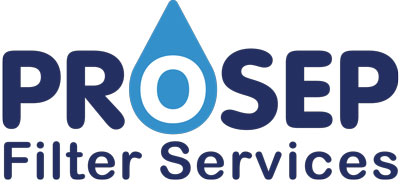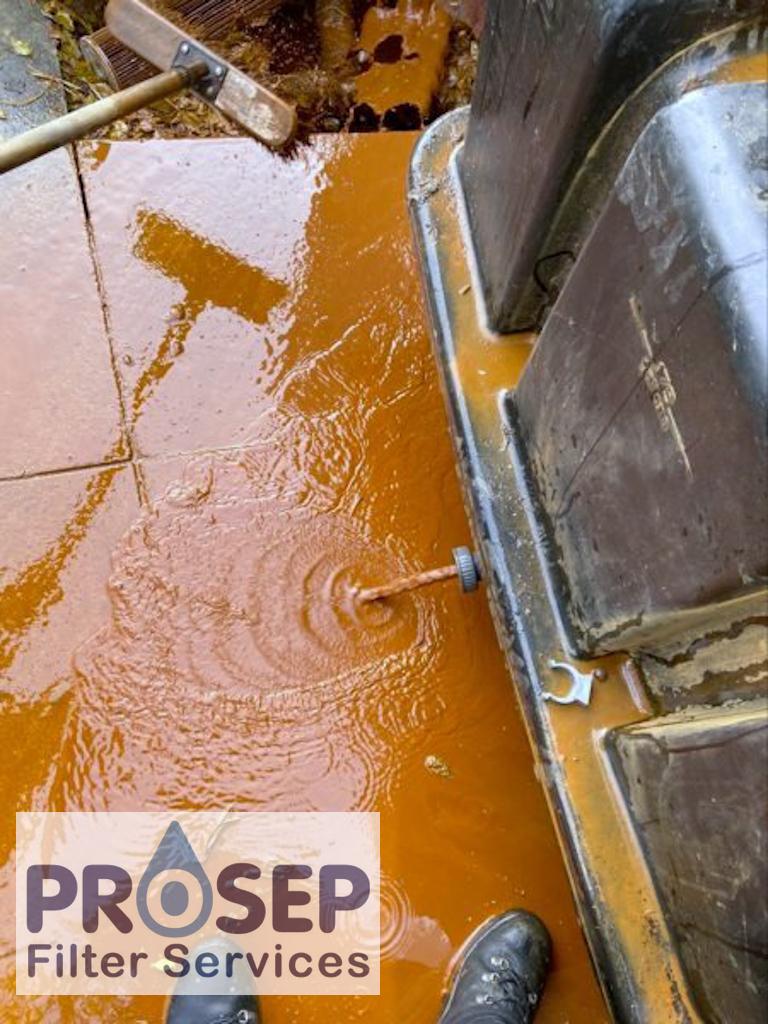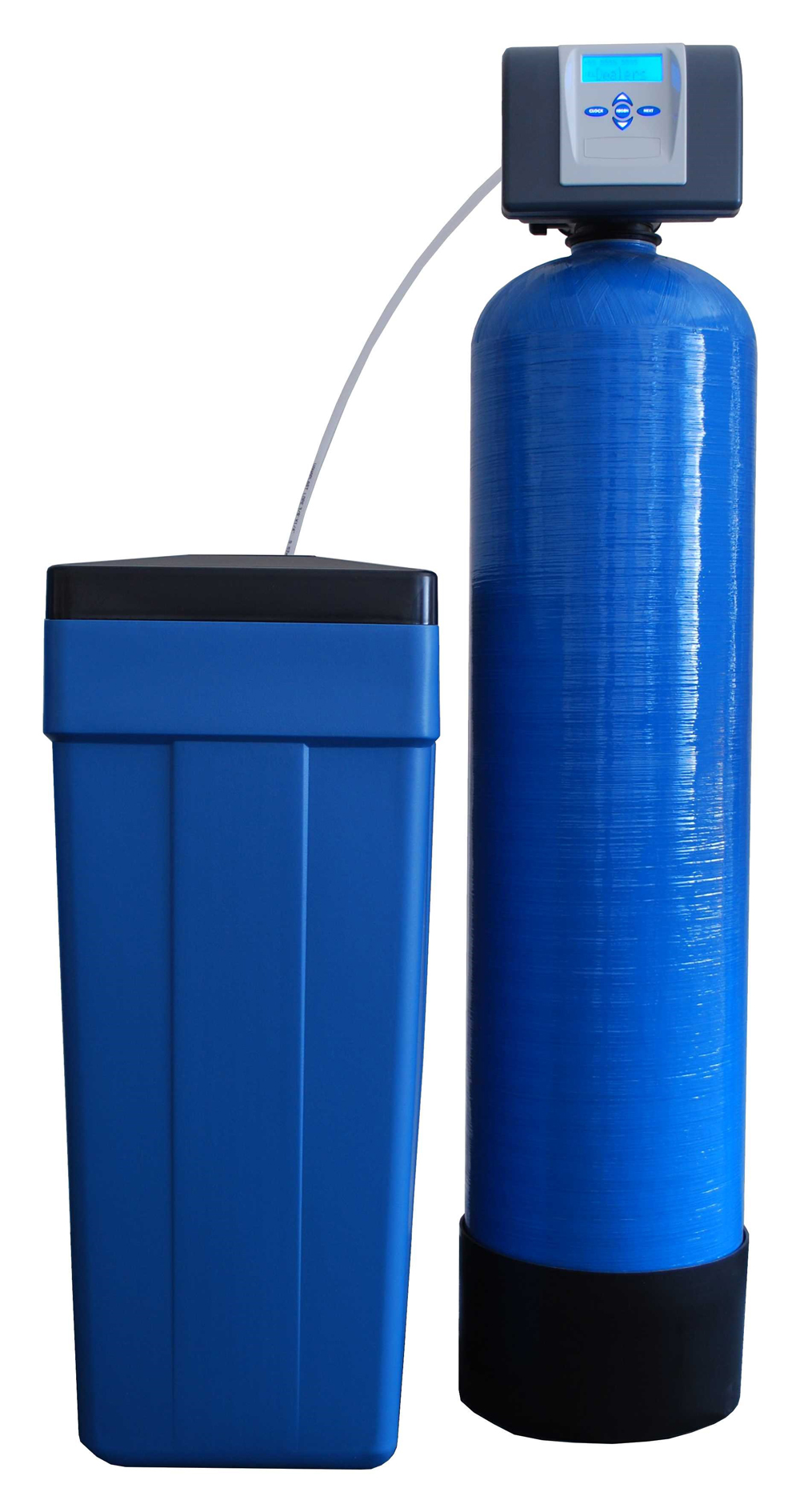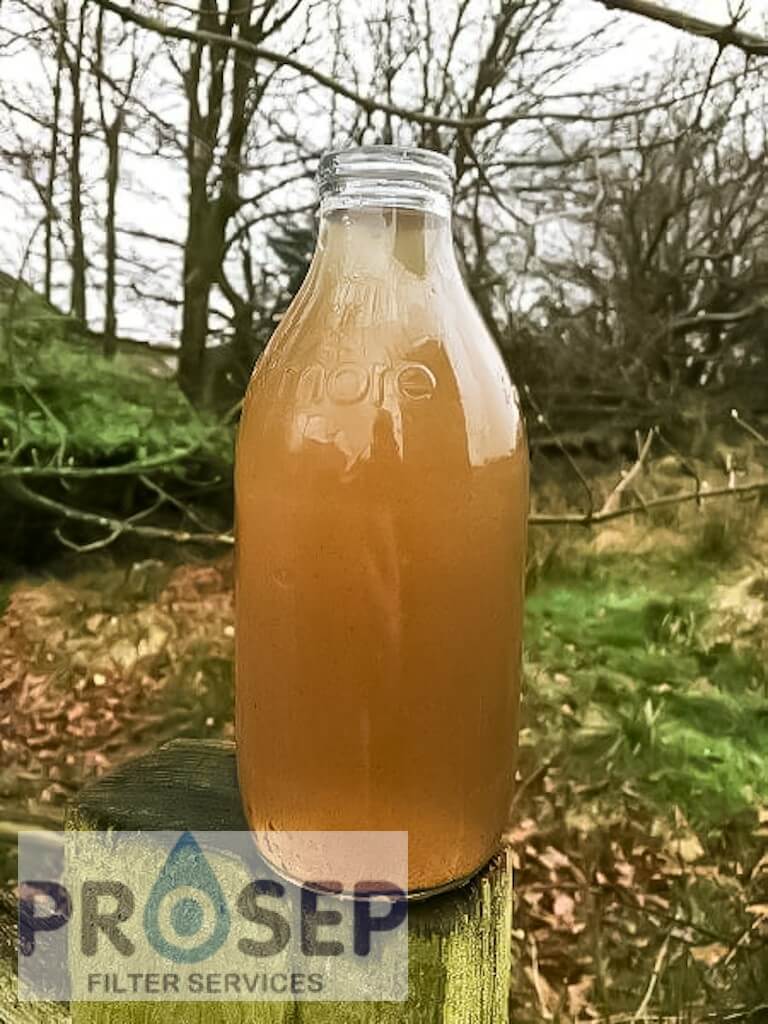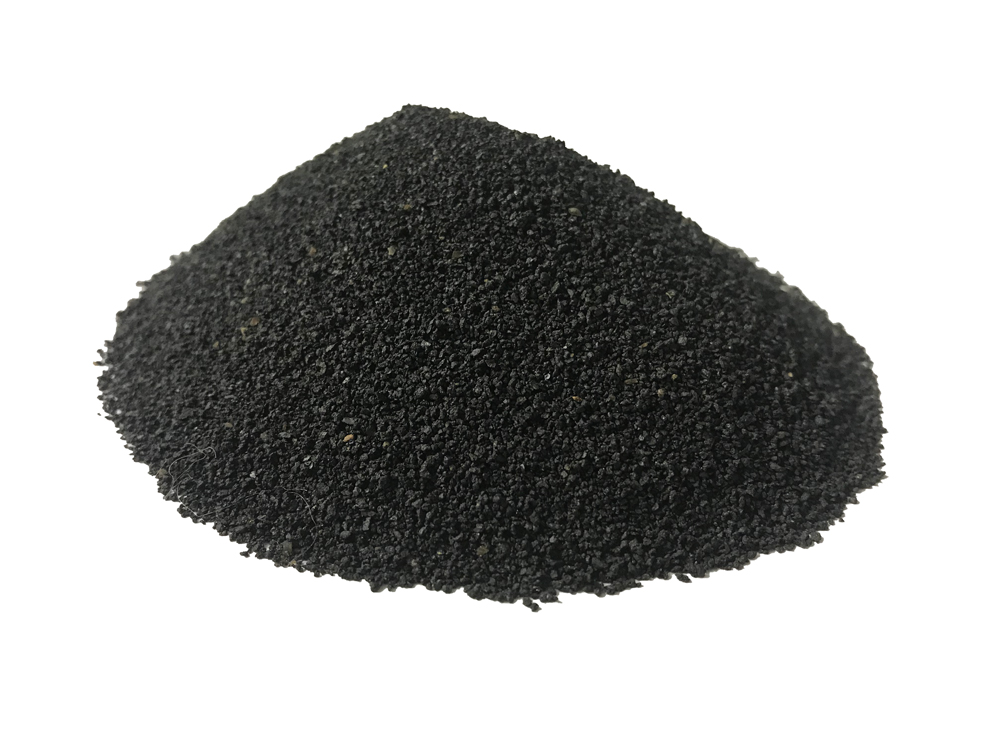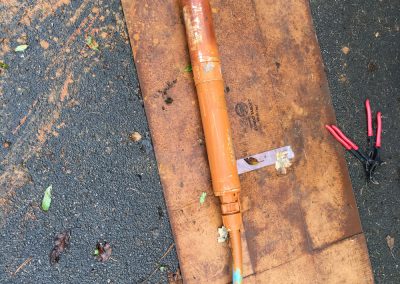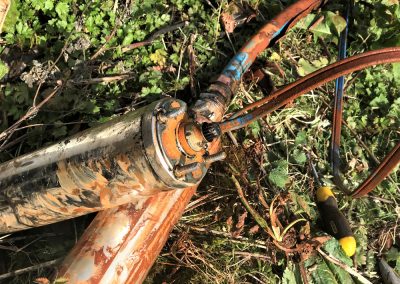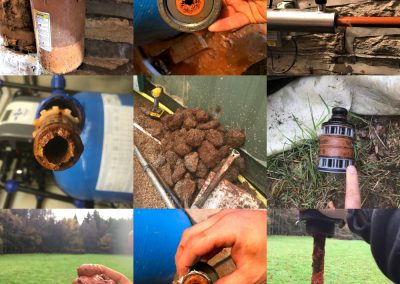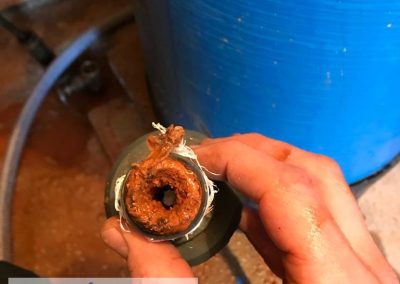Iron And Manganese Removal | Spring Water | Borehole Water
One of the most common problems in private water supplies around the UK is high levels of Iron and Manganese. Iron and manganese can be found in all types of private water supplies. It doesn’t matter if your supply is a borehole, a well, a spring or a stream.
How do I know if I have Iron in my water?
Iron can be present in two forms – sedimental and dissolved.
Sedimental iron in your private water supply will be very obvious as it will turn your water brown or orange. Examples of sedimental iron are shown in the photographs on the left.
If you have dissolved iron, your water will be visibly clear, and you may not be immediately aware of the iron contamination. Dissolved iron only appears once it has been undisturbed water for several hours. A toilet cistern or a dog or cat drinking bowl is perfect for dissolved iron to rear its ugly head. Only when the water is left undisturbed will the iron drop out of the solution and precipitate at the bottom of the cistern or bowl. Your water may also taste metallic or have a taste similar to blood.
Can I test to see if I have Iron in my water?
Yes, you can test the water for free yourself. If you think you have a problem with iron in your water, which is not visible, you can fill a pint glass with the water and leave it undisturbed overnight. If you have dissolved iron in your water, it will be visible in the morning at the bottom of the glass.
How do I know if I have Manganese in my water?
If you have manganese in your water, you will often find unsightly black flakes in your water supply. Your water will also have a very slight black/grey colour and may have a musty, earthy or oily smell.
Can I test to see if I have Manganese in my water?
Yes, if you cannot see any manganese but suspect your water is contaminated, you can carry out the same test as you would for dissolved iron. However, when testing for dissolved manganese, you would need to leave the glass undisturbed for around 1 week before you begin to see any manganese drop out.
How do I remove Iron and Manganese from my water supply?
Prosep Filter Services offer a wide range of media designed to remove iron and manganese in all private water supplies. Regardless of use, our systems can be applied to any application, whether domestic, commercial or agricultural.
Here at Prosep Filter Services, we can design systems capable of handling flow rates from as little as 1,000 litres per hour up to 50,000 litres per hour and beyond!
If you have iron or manganese in your water supply, contact Prosep Filter Services today and speak to one of our technical team for free advice – 01422 377367
Iron and Manganese Removal by Prosep Filter Services
Media Mix Filox
This media is used for removing iron, hydrogen sulphide and manganese from water supplies. It is a media that utilises an
oxidisation-reduction reaction and filtration process similar to Greensand, but at a much higher level of performance. Filox
media contains 80% manganese dioxide in an extremely unique cluster format for enhanced performance and maximised
capacity. Filox out performs Greensand, Birm etc. due to the purity of its particles, superior oxidisation, filtration capacity, and
durability. Requires a minimum bed depth of 500mm. Needs a pH of at least 8, for effective manganese reduction. Minimum
dissolved oxygen content of 15%.
Media Mix CR
CR media is an ion exchange media. This removes iron, manganese and hardness. The minimum pH requirement is 6.0 and
this media will raise the pH in these acidic waters. It works at it’s best on clear borehole water, i.e. when the iron/manganese are in a
dissolved form. It will also remove hardness with no extra treatment. Ammonia, lead, hydrogen sulphide and copper can also
be reduced. The media bed can be sanitised if required, with chlorine from time to time. The regeneration process is exactly
the same as that used in a water softener and requires regeneration with salt (sodium chloride). There are two types of CR
media. One is used where the pH is between 6 and 7 and will increase the pH, the other is used where the pH is 7 or above.
This media has a number of advantages over conventional systems, in that pH correction, iron/manganese reduction and softening can all be addressed in a single process.
Ion Exchange
If borehole water conditions are right, then a simple method, of reducing iron and manganese from water, is to use a Base Ion Exchange
resin. This resin works over a wider range of pH than Filox and, has the added benefit, of softening the borehole or spring water. The
resin works by using positively charged resin to attract the negatively charged contaminants, in this case iron and manganese. The ion exchange media retains the contaminants on the surface of each bead of resin. Once a certain volume of water has been used by the homeowner or the industrial process, the system will regenerate usin a brine solution. When the brine solution is drawn into the filter vessel the sodium ions “push” the contaimants off of the resins beads and the contaminants are flushed away during backwash and are flushed to a drain. As the sodium ions are retained in the filter vessel the sodium level of the water increases. Prosep Filter services will always ensure that the regulatory limits of sodium is not exceeded. The legal limit is 200ug/l.
Below is a photograph of filox
Examples of Iron Problems
Iron & Manganese Filtration Systems Installed by Prosep Filter Services
